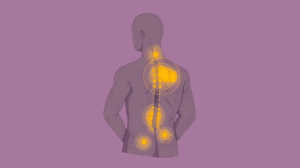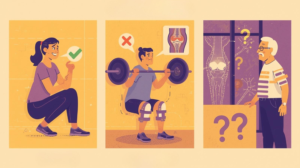Knee health is essential for maintaining movement, independence and quality of life. The knee is one of the most complex and largest joints in the human body supporting weight, allow movement and absorbing shocks from daily activities such as walking, running or climbing stairs. With age, physical activity or injuries, knees are likely to develop pain, inflammation and instability.
Knee caps, also known as knee braces, sleeves or supports are increasingly popular among athletes, elderly individuals and people recovering from injuries or surgeries. They offer external support to reduce pain, prevent injury and improve stability [1].
This article explores the major benefits of wearing a knee cap, how it works, who should use it, proper usage, risks and expert advice for maximizing knee health.
What Is a Kneecap? How It Works
Definition
A kneecap is a supportive device worn around the knee to provide stability, protection, and comfort. It may be made of elastic materials or neoprene or include hinges and straps for enhanced support. Kneecaps are designed to reduce pain, prevent further injury, and support rehabilitation.
Key Functions
- Compression: Provides gentle pressure around the joint to reduce swelling and inflammation.
- Alignment: Keeps the knee and patella (knee cap) properly aligned during movement.
- Stability: Enhances control and reduces the risk of twists, overextension, or falls.
- Support for Muscles and Ligaments: Helps surrounding muscles and ligaments absorb shocks and strain [2].
How It Supports the Knee
- Absorbs impact during high-intensity activity.
- Reduces strain on tendons and ligaments during repetitive movements.
- Maintains correct joint alignment during exercises, walking, or climbing stairs
Main Benefits of Wearing a Knee Cap
Knee caps provide a wide range of therapeutic and functional benefits. Their usefulness extends from relieving everyday pain to enhancing athletic performance and supporting post-surgical recovery. Below is a detailed look at the primary benefits.
1. Pain Relief and Comfort
- Alleviates Joint Strain: Kneecaps help distribute weight evenly across the knee joint. This reduces strain on ligaments, tendons, and cartilage, which is particularly useful for people with chronic conditions such as osteoarthritis.
- Manages Arthritis Pain: Arthritis often causes swelling, stiffness, and discomfort during movement. Wearing a kneecap retains heat in the joint, improves blood circulation, and reduces stiffness, making everyday activities like walking or climbing stairs more comfortable.
- Relieves Pain from Injuries: For minor injuries like sprains, tendonitis, or patellar pain, a kneecap provides external support, reducing the load on injured tissues and allowing healing without excessive strain.
- Warmth and Comfort: Compression sleeves or neoprene knee caps generate a mild warming effect, which can soothe inflamed areas and enhance comfort during activity.
Example: An elderly individual with mild osteoarthritis may experience significant relief while performing daily tasks like grocery shopping or light exercise simply by wearing a compression kneecap [3].
2. Injury Prevention
- Stabilizes the Knee Joint: Kneecaps provide external support to prevent overextension, twisting, and unnatural movements that can damage ligaments like the ACL or MCL.
- Ideal for Sports: Athletes engaging in running, jumping, or weightlifting can prevent acute injuries. Kneecaps enhance proprioception, which is the body’s ability to sense joint position, helping to avoid awkward landings or slips.
- Protection for Weak Knees: Individuals recovering from previous injuries or experiencing weakness in surrounding muscles can use a kneecap to reduce the likelihood of reinjury.
- Customizable Support: Hinged braces or patellar stabilizers provide targeted support, making them suitable for specific injury risks, such as preventing lateral movement in knees prone to dislocation.
Example: A volleyball player wearing a hinged knee brace during matches can reduce the risk of lateral ligament injury while jumping and landing repeatedly [4].
3. Enhanced Stability and Balance
- Improves Alignment: Kneecaps help maintain proper patellar alignment, ensuring the kneecap moves correctly during flexion and extension. Misalignment can lead to pain and long-term joint damage.
- Boosts Confidence: Those with unstable knees, whether due to age, arthritis, or previous injuries, often feel hesitant during daily activities. A kneecap provides support and reassurance, encouraging mobility.
- Reduces Fall Risk: Older adults or people with balance issues benefit significantly, as kneecaps enhance stability and prevent wobbling, reducing the chance of slips or falls.
- Supports Weight-Bearing Activities: Knee caps provide additional support when standing for long periods, walking on uneven terrain, or carrying heavy objects.
Example: An older adult who wears a kneecap while gardening or walking can reduce the risk of accidental twists or falls, maintaining independence and mobility.
4. Faster Recovery and Healing
- Post-Surgical Use: After surgeries such as ACL repair or meniscus reconstruction, kneecaps limit dangerous movements, protecting repaired tissues during early rehabilitation.
- Supports Healing Tissues: By restricting harmful motion and offering gentle compression, kneecaps prevent re-injury and allow tissues to heal properly.
- Enhances Blood Flow: Compression improves circulation, which helps deliver nutrients and oxygen to healing tissues, accelerating recovery.
- Gradual Movement: Adjustable knee braces allow patients to increase movement progressively, supporting physiotherapy exercises without compromising recovery [5].
Example: A patient recovering from knee surgery may start with a fully immobilizing brace and transition to a hinged brace as healing progresses, guided by a physiotherapist.
5. Reduces Swelling and Inflammation
- Compression Effect: Knee caps apply gentle pressure, helping drain excess synovial fluid and minimize swelling.
- Post-Activity Relief: Swelling from physical activity, even minor exercise, is reduced, easing pain and stiffness.
- Support for Minor Injuries: Individuals with sprains or minor ligament injuries benefit from less inflammation, allowing a faster return to normal activities.
6. Boosts Athletic Performance
- Extra Support: Athletes performing high-intensity exercises benefit from the stability knee caps provide.
- Endurance and Fatigue Reduction: By stabilizing the joint, kneecaps reduce the energy needed to stabilize muscles, delaying fatigue.
- Enhanced Confidence: Knowing the knee is protected allows athletes to push performance safely, maximizing training and competition output [6].
Example: A weightlifter wearing a compression knee sleeve can perform squats with improved control and reduced risk of overextension.
Who Should Use a Knee Cap
Kneecaps are not just for injured individuals; they are useful for a variety of people with specific needs.
1. Athletes
- Protection during High-Impact Activity: Sports like basketball, soccer, volleyball, or running place immense stress on the knee. Kneecaps help prevent ligament tears, sprains, and overuse injuries.
- Recovery Aid: Athletes recovering from injuries can continue training safely with partial support, enabling a gradual return to competition.
Proprioception Enhancement: Knee caps improve awareness of knee positioning, reducing the risk of awkward movements.
Example: A soccer player recovering from an MCL strain can train with a hinged knee brace to safely participate in drills.
2. Elderly People
- Joint Support: Age-related degeneration of cartilage and muscles leads to instability. provide external support to weak joints.
- Fall Prevention: By enhancing balance and alignment, knee caps reduce the risk of slips and falls, which are common causes of injury in older adults.
- Pain Reduction: Helps older adults manage chronic knee pain, allowing greater independence in daily activities.
Example: An elderly individual wearing a compression sleeve during morning walks can maintain mobility and reduce joint discomfort.
3. Post-Surgery Patients
- Controlled Movement: Knee caps with hinges or immobilizers restrict dangerous motions while allowing gradual increases in mobility.
- Supports Healing: Prevents accidental strain that can compromise surgical outcomes.
- Facilitates Physiotherapy: Adjustable braces allow safe performance of rehabilitation exercises, improving recovery time.
Example: A patient recovering from ACL reconstruction uses a post-surgery immobilizer for the first few weeks, transitioning to a hinged brace for controlled motion during rehab.
4. People with Arthritis or Weak Knees
- Daily Support: Compression sleeves or knee braces relieve pain during walking, climbing stairs, or standing.
- Reduces Fatigue: Supports joint and surrounding muscles, lowering energy expenditure for movement.
- Prevents Further Damage: Protects vulnerable joints from overuse or accidental strain.
Example: A person with osteoarthritis wears a compression knee sleeve daily to maintain independence and reduce knee discomfort.
How to Use a Knee Cap Properly
Proper usage is critical to maximize benefits and minimize risks. Improper use can lead to muscle weakness, circulation issues, or skin irritation.
Choose the Right Type
- Compression Sleeves: Suitable for mild support, arthritis, or minor pain.
- Hinged Braces: Ideal for ligament injuries or post-surgical rehabilitation.
- Patellar Stabilizers: Best for patellar tracking disorders or chronic instability.
- Post-Surgery Immobilizers: Used after ACL repair, meniscus surgery, or major ligament reconstruction.
Tip: Consult a healthcare professional to select the correct type based on activity level and condition.
Ensure a Snug Fit
- The brace should stay in place without sliding but not be tight enough to restrict blood flow.
- Check for numbness, tingling, or swelling, which indicates over-tightening.
- Adjust straps or choose the correct size to maintain comfort and support.
Wear During Activity or as Advised
- Use during walking, running, exercise, or weight-bearing tasks to prevent strain.
- Avoid prolonged continuous wear unless medically prescribed, as this can lead to muscle dependency.
- Monitor the knee for discomfort during initial usage.
Remove Periodically
- Give skin a break to prevent irritation or rashes.
- Even short breaks of 15–30 minutes improve skin health and comfort.
- Remove the brace during rest or low-activity periods.
Maintain Hygiene
- Wash the brace regularly according to manufacturer instructions.
- Avoid harsh detergents or high-heat drying, which can damage the material.
- Clean braces reduce bacterial buildup, odor, and infection risk [7].
Combine with Strengthening Exercises
- Engage quadriceps, hamstrings, glutes, and calf muscles to maintain natural knee support.
- Strengthening reduces dependency on the brace and improves long-term joint health.
- Examples include leg raises, step-ups, hamstring curls, and mini squats under guidance.
Consult a Professional
- Physiotherapists or orthopedic doctors can recommend proper usage, duration, and type.
- Personalized guidance ensures maximum benefit while minimizing risks, especially post-surgery or injury.
Conclusion
Knee caps provide multiple benefits, including pain relief, stability, injury prevention, and accelerated recovery. Proper use, correct fit, and guidance from a healthcare professional ensure that the kneecap is safe and effective. Combined with strengthening exercises and a mindful approach to activity, kneecaps can significantly improve quality of life and joint health.
Looking for more health and wellness solutions ? Don’t miss these related guides:-
Frequently Asked Questions:
1. What are the main benefits of wearing a kneecap?
Pain relief, injury prevention, enhanced stability, faster recovery, reduced swelling, and improved athletic performance.
2. Can kneecaps help reduce arthritis pain?
Yes, by stabilizing the joint, reducing strain, and retaining heat, knee caps can relieve arthritis-related discomfort.
3. Is it safe to wear a knee cap every day?
Only if recommended by a doctor or physiotherapist. Overuse can cause muscle weakness or circulation problems.
4. Do kneecaps really prevent injuries?
Yes, they provide joint stability, reduce overextension, and enhance proprioception, lowering injury risk during activities.
5. Can I wear a knee brace while exercising?
Yes, especially during high-impact or strenuous activity, to support the joint and prevent injury.
References
- American Academy of Orthopaedic Surgeons. (2024). Knee Braces for Injury Prevention and Rehabilitation. https://orthoinfo.aaos.org
- Cleveland Clinic. (2023). Knee Support and Braces: Usage and Benefits. https://health.clevelandclinic.org
- Harvard Health Publishing. (2023). Knee Braces: How to Use Them Safely. https://www.health.harvard.edu
- Mayo Clinic. (2024). Knee Pain Management and Recovery. https://www.mayoclinic.org
- WebMD. (2024). Knee Braces and Orthopedic Support for Injury and Arthritis. https://www.webmd.com
- Physiopedia. (2024). Knee Braces and Rehabilitation Exercises. https://www.physio-pedia.com
- National Institute of Arthritis and Musculoskeletal and Skin Diseases (NIAMS). (2023). Knee Health and Support Devices. https://www.niams.nih.gov























